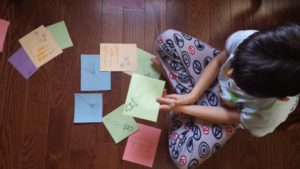What’s the Buzz: Exploring a Bee Colony’s Inner Workings

To view the photo-rich magazine version, click here.
Originally appears in the Fall 2018 issue.
“If the bee disappeared off the face of the Earth, man would only have four years left to live.”
ALBERT EINSTEIN ONCE forewarned us of this catastrophe, and we are well on our way to testing this prophecy. Many educators understand the vital importance of bees, their role in pollination and their contributions to our ecosystem. But how can we share this knowledge in an interesting and appealing manner, especially to those who are allergic, detached, or even have a fear of bees? This common fear or phobia is called melissophobia, “melissa” being the Greek word for bee. There is, however, no word for lack of interest in the topic, and we educators can do our best to ensure that it won’t be necessary to come up with one. The following activity was developed by teacher candidates at Brock University in St. Catharines, Ontario, to create an engaging series of steps that students will take to further their understanding of these creatures. When students make the connection that one third of our daily food intake relies on pollination by bees, they will recognize the critical need for protecting these animals.
Purpose of Activity
By having a deeper appreciation of the intricate network of worker bees, students will see that pollination and honey production entail hard work, yet are rewarding to all involved. A bee colony functions because every member contributes to the greater good of the community. Every bee does its share of the work to ensure that each member is taken care of and fed. The queen bee lays the eggs of future generations of workers and releases her pheromones to create a calm presence. The foragers harvest pollen to feed the colony. The undertakers remove dead and diseased bees to keep the colony healthy and prevent the spread of disease. Without the input of each of these members, a link in the chain would be broken and the colony would cease to function effectively. As such, a bee colony is also a perfect example of a well-functioning communal living environment. Each individual has a role that positively impacts itself and others.
This content is restricted to subscribers only.
If you are not yet a subscriber, please consider taking out a subscription here.
If you are an existing subscriber, kindly log in or contact us at info@greenteacher.com for more information.










